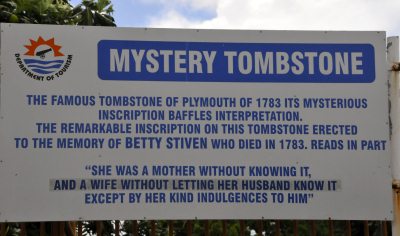Tobago

|
Tobago Tobago, the smaller of the two main islands that make up the Republic of Trinidad and Tobago, this mountainous island of one hundred and sixteen square miles has lovely beaches and green hills. Long used as a holiday destination for Trinidadians, Tobago has a low key but expanding tourist industry an was voted the world’s top eco-tourism destination World Travel Awards 2003. Fishing is important and much of the catch comes from seine netting.
Englishman's Bay
Hope Bay Some local words: Bacchanal - scandalous, social commotion, a rowdy event. Lime - hang out with friends. Maco - to be nosy or someone who is nosy. Mas - Carnival or masquerade Wine - sensual Trinbagonian dancing. Speech Bands – Tobago carnival tradition, featuring costumed characters speechifying in rhyme. Tambri - quintessential Tobagonian music driven by three shallow goatskin tambrin drums (high pitched cutter, roller and boom base), fiddle and steel triangle. Accompanies social events. 
Economy and tourism: Tobago's economy is tightly linked with Trinidad, and is based on
liquefied natural gas (LNG), petrochemicals and steel. The principal economic
forces specific to Tobago are tourism and government spending. Conventional beach and water-sports tourism
is largely focussed in the south-west around the airport and the coastal strip;
however, ecotourism is growing in significance, and much of it is focussed on the large
area of protected forest in the centre and north of the main island and on
Little
Tobago, a small island off the north east tip of the main
island. Tourism is concentrated in the southwest of the island around Crown Point, Store Bay, Pigeon Point and Buccoo Reef. This area has large expanses of sand and is dominated by resort type developments. Tobago has many idyllic beaches around its coastline, especially those at Castara, Bloody Bay, and Englishman's Bay. 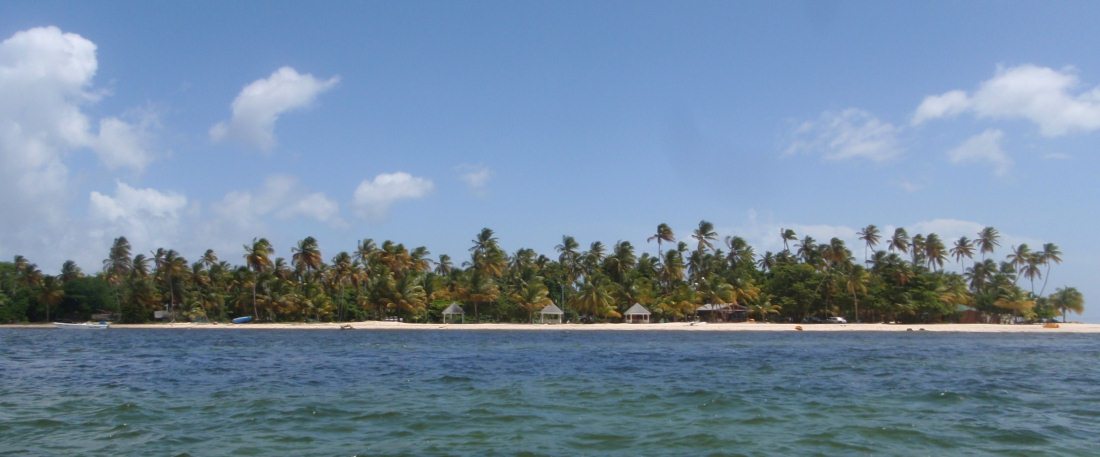 Pigeon Point has graced hundreds of postcards and brochures with..................................... 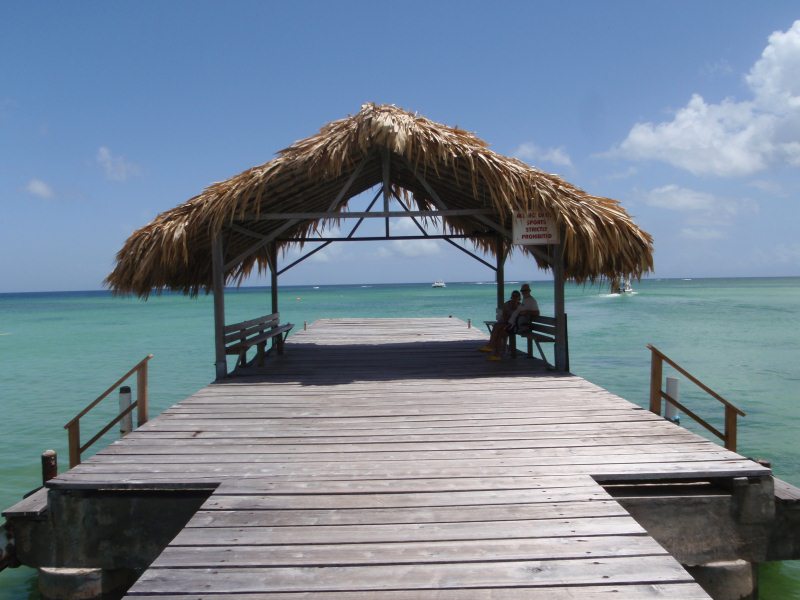 .......................... its jetty’s carat-thatched cabana set against the turquoise water.
Buccoo Reef and Nylon Pool is (the most
frequently visited reef on Tobago) is an arc of five reef flats separated by
channels. It boasts forty species of coral. French explorer Jacques Cousteau
labeled it the third most beautiful reef in the world. It was declared a marine
protected area in 1973. Between the shore and the reef is the Nylon Pool, an
offshore sandbar that has formed a three foot deep pool in the ‘middle of the
ocean’. The name comes from Princess Margaret, who reportedly said the water was
as clear as her nylon stockings. Tobago is linked to the world through the Crown
Point International Airport and the Scarborough harbour. Domestic flights connect Tobago with
Trinidad and international flights connect with the Caribbean and Europe. There
is also a daily fast ferry service between Port of Spain and
Scarborough. The island of Tobago is also thought to be the island that the story Robinson Crusoe was written about However, the book is probably based on some of the experiences of Alexander Selkirk, who was marooned in the Pacific's Juan Fernandez Islands. The island was also the filming location for the Walt Disney movie The Swiss Family Robinson.
Environmental problems: Coral reefs have been damaged recently by silt and mud runoff during construction of a road along the north east coast. There has also been damage to the reef in Charlotteville village caused by sealing the road at Flagstaff Hill and diverting more silty water down the stream from Flagstaff down to Charlotteville.
 Diving: Tobago is also a popular diving location, since it is the most southerly of the Caribbean islands which have coral communities. Trinidad, which is further south, has no significant coral because of low salinity and high silt content, the result of its position close to the mouth of Venezuela's Orinoco River. Scuba diving on Tobago tends to be centred at Speyside. The island has some of the best diving sites in the Caribbean. There are three wrecks located around its shores, but the one usually considered the best is the Maverick Ferry, which used to travel between Trinidad and Tobago. The ferry is three hundred and fifty feet long and has been sunk in a hundred feet just off Rocky Point, Mt. Irvine. The top of the wreck is at fifty 50 feet. The wreck has an abundance of marine life, including a four foot jewfish, a member of the grouper family. The wreck was purposely sunk for divers, so all the doors and windows were removed. The waters around the island are home to many species of tropical fish, rays, sharks, and turtles.
 Ecology: The Tobago Forest Reserve (or the Main Ridge Reserve) claims to be the oldest protected forests in the Western world. It was designated as a protected Crown Reserve on the 17th of April 1776 following representations by Soame Jenyns a Member of Parliament in Britain who had the responsibility for the development of Tobago. It has remained a protected area ever since. This forested area has great biodiversity including many species of birds, mammals, frogs, (nonpoisonous) snakes, butterflies and other invertebrates. It is one of the most approachable areas of rainforest, since it is relatively small and there are government-appointed guides who provide an authoritative guiding service through the forest at a reasonable cost. The guides are knowledgeable about the plants and the animals, and can call down rare and exotic birds from the canopy by imitating their calls.
 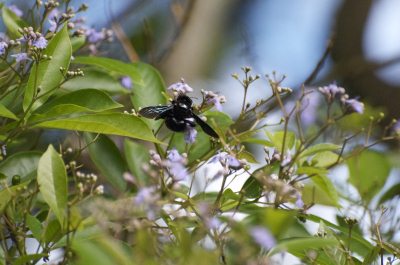 Little Tobago, the small neighbouring island, supports some of the
best dry
forest remaining in Tobago. Little Tobago and St. Giles Island are
important seabird nesting colonies, with Red-billed
Tropicbird, Magnificent
Frigatebird and Audubon's
Shearwater amongst others. Government: Local Government functions in Tobago are handled by the Tobago House of Assembly. The current Chief Secretary of the THA is Orville London. The People's National Movement controls eight seats in the Assembly, while the Tobago Organization of the People controls the four other seats.
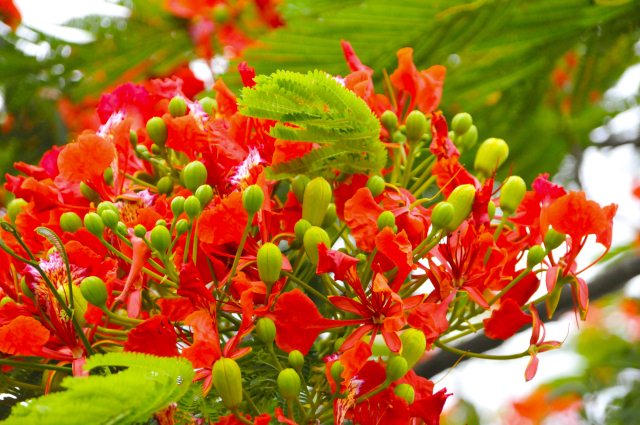 Hurricanes: Although Tobago lies to the south of the hurricane belt, it was nevertheless struck by Hurricane Flora on the 30th of September 1963. The effects of the hurricane were so severe that it changed the face of Tobago's economy. The hurricane laid waste to the plantations of banana, coconut and cacao, which largely sustained the economy. It wreaked considerable damage to the largely pristine tropical rainforest that makes up a large proportion of the interior of the northern half of the island. Subsequently, many of the plantations were abandoned, and the economy changed direction away from cash crop agriculture toward tourism. In 2004 Hurricane Ivan, although less severe than Flora, did cause significant damage.
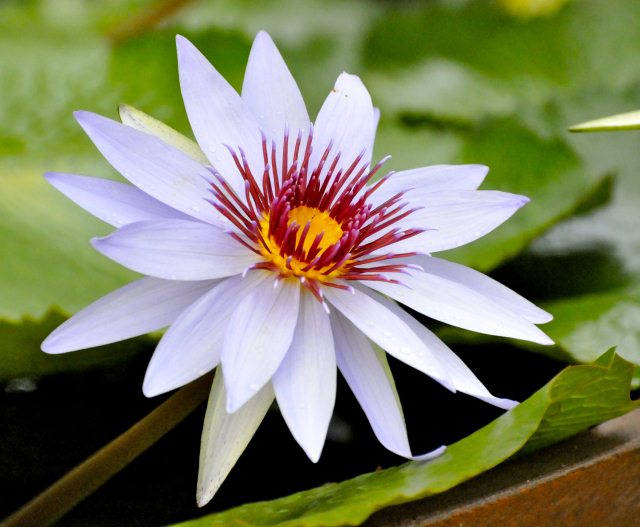 Baked pig - the whole pig is cooked in the earth, most often at the
Saraka Feast in the Tobago Heritage Festival. Oil down – breadfruit and meat boiled down with coconut
milk. Conch souse – large sea snails boiled and served cold in a salty
sauce with lime, cucumber, pepper and onion. Pacro water – broth made with chiton or ‘sea cockroach’ said to be an
aphrodisiac. Blue food - is any ground provision or root vegetable – dasheen,
eddoes, sweet potato, cassava etc. Bush Tea – brewed from herbs and plants such as greaterwood, trumpet,
bois canot, lemongrass, lime bud and fever grass. Yabba - thick soup with
dumpling, fish pig-tail, potato, breadfruit, cassava, dasheen, green banana and
anything that takes your fancy. Other popular soups are sancoche, fish or
cowheel. Squash – drink made with lemon and lime juice. Tom tom – cooked half-ripe plantain pounded in a mortar made into a
kind of pudding. Sweets – toolum, guava cheese, pawpaw balls, shaddock candy, tamarind balls, benne balls, sugar cake, cashew cake, cassava pone, coconut sweetbread, black cake, ice cream and deserts flavoured with rum, fruit coconut and even Guiness which is popular on the island. My favourite is a hard ball that tastes like toffee apple toffee filled with sesame seeds the size of a ping pong ball. Perfect to fit in a cheek.
 
Mot mot and the postman
|




